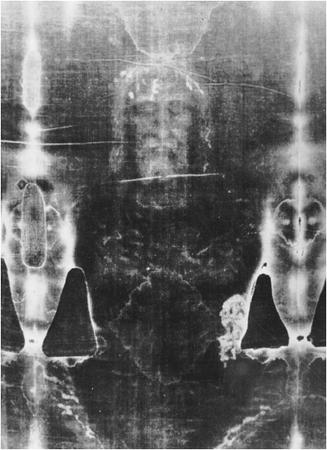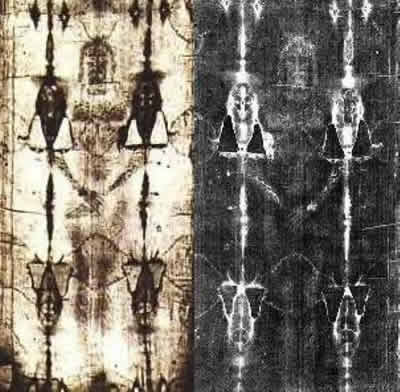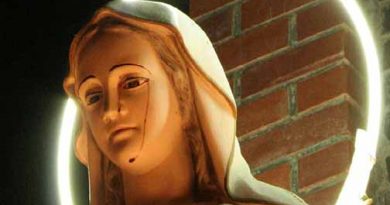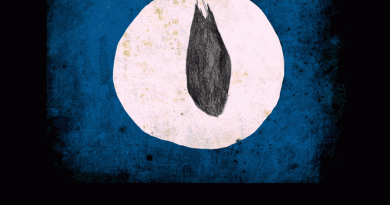Shroud of Turin – Resurrection of Jesus
The Shroud of Turin (or Turin Shroud) is a linen cloth bearing the image of a man who appears to have been physically traumatized in a manner consistent with crucifixion. It is kept in the royal chapel of the Cathedral of Saint John the Baptist in Turin, Italy. It is believed by many to be a cloth worn by Jesus of Nazareth at the time of his burial, two days prior to his alleged resurrection. The image on the shroud is commonly associated with Jesus, his crucifixion and burial.
The image on the shroud is much clearer in black-and-white negative than in its natural sepia color. The striking negative image was first observed on the evening of May 28, 1898 on the reverse photographic plate of amateur photographer Secondo Pia who was allowed to photograph it while it was being exhibited in the Turin Cathedral. According to Pia, he almost dropped and broke the photographic plate from the shock of seeing an image of a person on it.
The shroud of Turin is the subject of intense debate among some scientists, people of faith, historians, and writers regarding where, when, and how the shroud and its images were created. From a religious standpoint, in 1958 Pope Pius XII approved of the image in association with the Roman Catholic devotion to the Holy Face of Jesus, celebrated every year on Shrove Tuesday. Some believe the shroud is the cloth that covered Jesus when he was placed in his tomb and that his image was recorded on its fibers at or near the time of his alleged resurrection. Skeptics, on the other hand, contend the shroud is a medieval forgery; others attribute the forming of the image to chemical reactions or other natural processes.
Various tests have been performed on the shroud, yet the debates about its origin continue. Radiocarbon dating in 1988 by three independent teams of scientists yielded results published in Nature indicating that the shroud was made during the Middle Ages, approximately 1300 years after Jesus lived. Claims of bias and error in the testing were raised almost immediately, and were answered by Harry E. Gove ] and others. Yet the dating controversy has continued. Follow-up analysis published in 2005, for example, claimed that the sample dated by the teams was taken from an area of the shroud that was not a part of the original cloth. This analysis itself is questioned by skeptics such as Joe Nickell, who reason that the conclusions of the author, Raymond Rogers, result from “starting with the desired conclusion and working backward to the evidence”. Former Nature or Philip Ball has said that the idea that Rogers steered his study to a preconceived conclusion is “unfair” and Rogers “has a history of respectable work”.
However, the 2008 research at the Oxford Radiocarbon Accelerator Unit may revise the 12601390 dating toward which it originally contributed, leading its director Christopher Ramsey to call the scientific community to probe anew the authenticity of the Shroud. “With the radiocarbon measurements and with all of the other evidence which we have about the Shroud, there does seem to be a conflict in the interpretation of the different evidence” Christopher Ramsey said to BBC News in 2008, after the new research emerged. Despite keeping an open mind, Ramsey has stressed that he would be surprised if the 1988 tests were shown to be far off, let alone “a thousand years wrong.”
Characteristics
 The shroud is rectangular, measuring approximately 4.4 × 1.1 m (14.3 × 3.7 ft). The cloth is woven in a three-to-one herringbone twill composed of flax fibrils. Its most distinctive characteristic is the faint, yellowish image of a front and back view of a naked man with his hands folded across his groin. The two views are aligned along the midplane of the body and point in opposite directions. The front and back views of the head nearly meet at the middle of the cloth. The views are consistent with an orthographic projection of a human body, but see Analysis of the image as the work of an artist.
The shroud is rectangular, measuring approximately 4.4 × 1.1 m (14.3 × 3.7 ft). The cloth is woven in a three-to-one herringbone twill composed of flax fibrils. Its most distinctive characteristic is the faint, yellowish image of a front and back view of a naked man with his hands folded across his groin. The two views are aligned along the midplane of the body and point in opposite directions. The front and back views of the head nearly meet at the middle of the cloth. The views are consistent with an orthographic projection of a human body, but see Analysis of the image as the work of an artist.
The “Man of the Shroud” has a beard, moustache, and shoulder-length hair parted in the middle. He is muscular, and tall (various experts have measured him as from 1.75 m, or roughly 5 ft 9 in, to 1.88 m, or 6 ft 2 in). For a man of the first century (the time of Jesus’ death), or of the Middle Ages (the time of the first uncontested report of the shroud’s existence and the proposed time of a possible forgery), these figures present an above-average height. Reddish brown stains that have been said to include whole blood are found on the cloth, showing various wounds that correlate with the yellowish image, the pathophysiology of crucifixion, and the Biblical description of the death of Jesus:
- one wrist bears a large, round wound, apparently from piercing (the second wrist is hidden by the folding of the hands)
- upward gouge in the side penetrating into the thoracic cavity, a post-mortem event as indicated by separate components of red blood
- cells and serum draining from the lesion
- small punctures around the forehead and scalp
- scores of linear wounds on the torso and legs claimed to be consistent with the distinctive dumbbell wounds of a Roman flagrum.
- swelling of the face from severe beatings
- streams of blood down both arms that include blood dripping from the main flow in response to gravity at an angle that would occur during crucifixion
- no evidence of either leg being fractured
- large puncture wounds in the feet as if pierced by a single spike
More recent photo of the face, positive left, negative right. Note: Negative has been flipped to facilitate point-by-point comparison.Other physical characteristics of the shroud include the presence of large water stains, and from a fire in 1532, burn holes and scorched areas down both sides of the linen due to contact with molten silver that burned through it in places while it was folded. Some small burn holes that apparently are not from the 1532 event are also present. In places, there are permanent creases due to repeated foldings, such as the line that is evident below the chin of the image.
On May 28, 1898, amateur Italian photographer Secondo Pia took the first photograph of the shroud and was startled by the negative in his darkroom. Negatives of the image give the appearance of a positive image, which implies that the shroud image is itself effectively a negative of some kind. Magician and paranormal skeptic Joe Nickell, however, notes that: “it’s not a true photographic negative. The hair and beard are white in the positive image. Unless Jesus was an albino, there’s a problem there.”
Image analysis by scientists at the Jet Propulsion Laboratory found that rather than being like a photographic negative, the image unexpectedly has the property of decoding into a 3-D image of the man when the darker parts of the image are interpreted to be those features of the man that were closest to the shroud and the lighter areas of the image those features that were farthest. This is not a property that occurs in photography, and researchers could not replicate the effect when they attempted to transfer similar images using techniques of block print, engravings, a hot statue, and bas-relief.
The controversy
The origin of the Shroud of Turin is hotly disputed. Researchers have coined the term sindonology to describe its general study (from Greek s??d??sindon, the word used in the Gospel of Mark to describe the type of cloth that Joseph of Arimathea bought to use as Jesus’ burial cloth).
Possible means of image formation
The image on the cloth has many peculiar and closely studied characteristicsPDF (114 KiB), for example, it is entirely superficial, not penetrating into the cloth fibers under the surface, so that the flax and cotton fibers are not colored; the image yarn is composed of discolored fibers placed side by side with non-discolored fibers so many striations appear. Thus the cloth is not simply dyed, though many other explanations, natural and otherwise, have been suggested for the image formation. Alone among published researchers, McCrone believed the entire image to be composed of pigment. However, this hypothesis was disproved after closer inspection showed that there was no more pigment particles on the image area than on the non-image area of the shroud. Other results have shown the image to be a discoloration, not a “coloration.”
Miraculous formation
Many believers have hypothesized that the image on the shroud was produced by a side effect of the Resurrection of Jesus, purposely left intact as a rare physical aid to understanding and believing in Jesus’ dual nature as man and God. Some have asserted that the shroud collapsed through the glorified body of Jesus, pointing to certain X-ray-like impressions of the teeth and the finger bones. Others assert that radiation streaming from every point of the revivifying body struck and discolored every opposite point of the cloth, forming the complete image through a kind of supernatural pointillism using inverted shades of blue-gray rather than primary colors. Because these specific explanations, and dozens of others like them, posit the intervention or influence of a being or beings outside the observable constraints of nature, there is no limit to their imagination and construction.
Maillard reaction hypothesis
Phase contrast microscopic view of image-bearing fiber from the Shroud of Turin. Carbohydrate layer is visible along top edge. The lower-right edge shows that coating is missing. The coating can be scraped off or removed with adhesive or diimide.The Maillard reaction is a form of non-enzymatic browning involving an amino acid and a reducing sugar. The cellulose fibers of the shroud are coated with a thin carbohydrate layer of starch fractions, various sugars, and other impurities. In a paper entitled “The Shroud of Turin: an amino-carbonyl reaction may explain the image formation,” R.N. Rogers and A. Arnoldi propose that amines from a recently deceased human body may have undergone Maillard reactions with this carbohydrate layer within a reasonable period of time, before liquid decomposition products stained or damaged the cloth. The gases produced by a dead body are extremely reactive chemically and within a few hours, in an environment such as a tomb, a body starts to produce heavier amines in its tissues such as putrescine and cadaverine. This raises questions, however, as to why the images (both ventral and dorsal views) are so photorealistic, and why they were not destroyed by later decomposition products. Removal of the cloth from the body within a short enough time frame would prevent exposure to these later decomposition products. It is worth noting, however, that the Maillard reaction is ordinarily observed as the browned parts of cooked foods, especially in broiled, grilled, or fried dishes, in which cases, the most superficial portions are subjected to high temperature (310 Fahrenheit/155 Celcius), low moisture conditions.
Auto-oxidation
Christopher Knight and Robert Lomas (1997) claim that the image on the shroud is that of Jacques de Molay, the last Grand Master of the Order of the Knights Templar, arrested for heresy at the Paris Temple by Philip IV of France on 13 October 1307. De Molay suffered torture under the auspices of the Chief Inquisitor of France, William Imbert. His arms and legs were nailed, possibly to a large wooden door. According to Knight and Lomas, after the torture De Molay was laid on a piece of cloth on a soft bed; the excess section of the cloth was lifted over his head to cover his front and he was left, perhaps in a coma, for perhaps 30 hours. They claim that the use of a shroud is explained by the Paris Temple keeping shrouds for ceremonial purposes.
De Molay survived the torture but was burned at the stake on 19 March 1314 together with Geoffroy de Charney, Templar preceptor of Normandy. De Charney’s grandson was Jean de Charney who died at the battle of Poitiers. After his death, his widow, Jeanne de Vergy, purportedly found the shroud in his possession and had it displayed at a church in Lirey.
Knight and Lomas base their argument partly on the 1988 radiocarbon dating and Mills’ 1995 research about a chemical reaction called auto-oxidation and they claim that their theory accords with the factors known about the creation of the Shroud of Turin and the carbon dating results. The counter argument is that the Templars acquired the shroud upon one of the crusades and brought it to France where it remained a secret until Jean de Charney died.
Photographic image production
Some suggest that there is a strong resemblance between this purported self-portrait of Leonardo da Vinci and the Man of the Shroud.Skeptics have proposed many means for producing the image in the Middle Ages. Lynn Picknett and Clive Prince (1994) proposed that the shroud is perhaps the first ever example of photography, showing the portrait of its purported maker, Leonardo da Vinci. According to this hypothesis, the image was made with the aid of a “magic lantern,” a simple projecting device, or by means of a camera obscura and light-sensitive silver compounds applied to the cloth.
Although Leonardo was born a century after the first documented appearance of the cloth, supporters of this hypothesis propose that the original cloth was an inferior fake, which was replaced with a superior hoax created by Leonardo. However, no contemporaneous reports indicate a sudden change in the quality of the image. The Turin Library holds a drawing of an old man that is widely but not universally accepted as a self-portrait by Leonardo. As the image depicts a man with a prominent brow and cheekbones and a beard, some consider that it resembles the image on the Shroud and have suggested that as part of a complex hoax, Leonardo may have placed his own portrait on the Shroud as the face of Jesus. There is however, no mention of this supposed resemblance in any known contemporary account, nor any reference to a connection between the Shroud and Leonardo.
There is also conjecture that he was commissioned by the royal family of Turin, with whom he was friends, to create a work which could return to Turin that which had been lost for so many years. Such notions, however, are conjectural and are not taken seriously by most academic scholars.
Painting
In 1977, a team of scientists selected by the Holy Shroud Guild developed a program of tests to conduct on the Shroud, designated the Shroud of Turin Research Project (STURP). Anastasio Cardinal Ballestrero, the archbishop of Turin, granted permission, despite disagreement within the Church. The STURP scientists conducted their testing over five days in 1978. Walter McCrone, a member of the team, upon analyzing the samples he had, concluded in 1979 that the image is actually made up of billions of submicrometre pigment particles.[22] The only fibrils that had been made available for testing of the stains were those that remained affixed to custom-designed adhesive tape applied to thirty-two different sections of the image. (This was done in order to avoid damaging the cloth.) According to McCrone, the pigments used were a combination of red ochre and vermillion tempera paint. The Electron Optics Group of McCrone Associates published the results of these studies in five articles in peer-reviewed journals: Microscope 1980, 28, 105, 115; 1981, 29, 19; Wiener Berichte uber Naturwissenschaft in der Kunst 1987/1988, 4/5, 50 and Acc. Chem. Res. 1990, 23, 7783. STURP, upon learning of his findings, confiscated McCrone’s samples, and brought in other scientists to replace him. In McCrone’s words, he was “drummed out” of STURP and continued to defend the analysis he had performed, becoming a prominent proponent of the position that the Shroud is a forgery. As of 2004, no other scientists have been able to confirm or refute McCrone’s results with independent experiments, simply because the Vatican refuses to cooperate.
Dr. John Heller and Dr. Alan Adler, the scientists whom STURP asked for a second opinion after McCrone’s, examined the same samples Shroud of Turin as McCrone researched. They confirmed McCrone’s result that the cloth contains iron oxide. However, they concluded, both due to the exceptional purity of the chemical and due to comparisons with other ancient textiles which showed that retting flax draws in iron, that the iron was not the source of the body image. McCrone’s response to their analysis has been vehement and negative.
Other microscopic analysis of the fibers seems to indicate that the image is strictly limited to the carbohydrate layer, with no additional layer of pigment visible. Proponents of the position that the Shroud is authentic say that no known technique for hand application of paint could apply a pigment with the necessary degree of control on such a nano-scale fibrillar surface plane. Moreover, they claim the technical skill required to produce the photographic or near-photograpic realism in the image on the Shroud would be impressive in any century, much less the twelfth or thirteenth. However, Renaissance painters have produced a number of photorealistic artworks.[26]
In the television program “Decoding The Past: The Shroud of Turin,” The History Channel reported the official finding of STURP that no pigments were found in the shroud image and multiple scientists asserted this conclusion on camera. No hint of controversy over this claim was suggested. The program stated that a NASA scientist organized STURP in 1976 (after being surprised to find depth-dimensional information encoded within the shroud image); no mention of the Holy Shroud Guild was made.
Solar masking, or “shadow theory”
In March 2005, N.D. Wilson, a literature instructor at New Saint Andrews College and amateur sindonologist, announced in an informal article in Books and Culture magazine that, inspired by an idea from G.K. Chesterton’s Father Brown stories, he had made a near duplicate of the shroud image by exposing dark linen to the sun for ten days under a sheet of glass on which a positive face mask had been painted. The sun bleached white all of the dark linen except for the areas under the painted glass image, which remained dark. The dark image that remained on the linen was notable for its three dimensional rendering – similar to what is seen on the Shroud of Turin. This 3-D image was created by the composite of shadows cast by the painted glass face: as the sun moved from sunrise to sunset, the changing angle of light striking the painted glass produced a three dimensional image of the face on the cloth. His method, though admittedly crude and preliminary, has nonetheless attracted the attention of several sindonologists, notably the late Raymond Rogers of the original STURP team, and Antonio Lombatti, founder of the skeptical shroud journal Approfondimento Sindone. Wilson’s method is notable because it does not require any conjectures about unknown medieval technologies and is compatible with claims that there is no pigment on the cloth. However, the experiment has not been repeated and the images have yet to face microscopic and chemical analysis. In addition, concerns have been raised about the availability or affordability of medieval glass large enough to produce the image and the method’s compatibility with Fanti’s claim that the original image is doubly superficial.
Using a bas-relief
Another hypothesis suggests that the Shroud may have been formed using a bas-relief sculpture. Researcher Jacques di Costanzo, noting that the Shroud image seems to have a three-dimensional quality, suggested that perhaps the image was formed using an actual three-dimensional object, like a sculpture. While wrapping a cloth around a life-sized statue would result in a distorted image, placing a cloth over a bas-relief would result in an image like the one seen on the shroud. To demonstrate the plausibility of his hypothesis, Costanzo constructed a bas-relief of a Jesus-like face and draped wet linen over the bas-relief. After the linen dried, he dabbed it with ferric oxide and gelatin mixture. The result was an image similar to that of the Shroud. The imprinted image turned out to be wash-resistant, impervious to temperatures of 250 C (482 F) and was undamaged by exposure to a range of harsh chemicals, including bisulphite which, without the help of the gelatine, would normally have degraded ferric oxide to the compound ferrous oxide.[27] Similar results have been obtained by author Joe Nickell. Instead of painting, the bas-relief could also be heated and used to burn an image into the cloth.
Second Image on back of cloth
During restoration of Shroud of Turin in 2002, the back of the cloth was photographed and scanned for the first time. The journal of the Institute of Physics in London published a peer-reviewed articlePDF (1.52 MiB) on this subject on April 14, 2004. Giulio Fanti and Roberto Maggiolo of the University of Padua – Italy, are the authors. They describe an image on the reverse side, much fainter than that on the front, consisting primarily of the face and perhaps hands. Like the front image, it is entirely superficial, with coloration limited to the carbohydrate layer. The images correspond to, and are in registration with, those on the other side of the cloth. No image is detectable in the dorsal view of the shroud.
Supporters of the Maillard reaction theory point out that the gases would have been less likely to penetrate the entire cloth on the dorsal side, since the body would have been laid on a stone shelf. At the same time, the second image makes the electrostatic hypothesis probable because a double superficiality is typical of coronal discharge and the photographic hypothesis is somewhat less probable.
To continue reading http://en.wikipedia.org/wiki/Shroud_of_Turin



